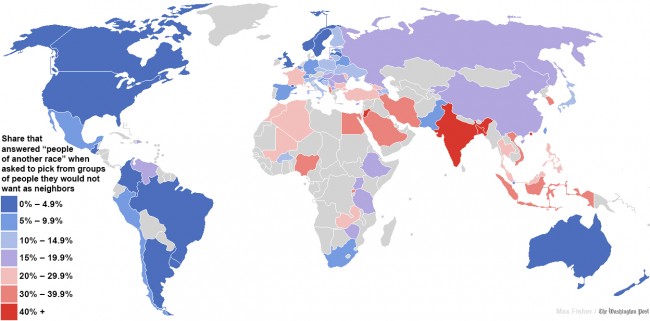 Research shows how children as young as four years empathize with some but not others. It’s all about the group: which peer group you belong to versus the rest. Thus, the uphill struggle to instill tolerance in the next generation needs to begin very early in life.
Research shows how children as young as four years empathize with some but not others. It’s all about the group: which peer group you belong to versus the rest. Thus, the uphill struggle to instill tolerance in the next generation needs to begin very early in life.
From the WSJ:
Here’s a question. There are two groups, Zazes and Flurps. A Zaz hits somebody. Who do you think it was, another Zaz or a Flurp?
It’s depressing, but you have to admit that it’s more likely that the Zaz hit the Flurp. That’s an understandable reaction for an experienced, world-weary reader of The Wall Street Journal. But here’s something even more depressing—4-year-olds give the same answer.
In my last column, I talked about some disturbing new research showing that preschoolers are already unconsciously biased against other racial groups. Where does this bias come from?
Marjorie Rhodes at New York University argues that children are “intuitive sociologists” trying to make sense of the social world. We already know that very young children make up theories about everyday physics, psychology and biology. Dr. Rhodes thinks that they have theories about social groups, too.
In 2012 she asked young children about the Zazes and Flurps. Even 4-year-olds predicted that people would be more likely to harm someone from another group than from their own group. So children aren’t just biased against other racial groups: They also assume that everybody else will be biased against other groups. And this extends beyond race, gender and religion to the arbitrary realm of Zazes and Flurps.
In fact, a new study in Psychological Science by Dr. Rhodes and Lisa Chalik suggests that this intuitive social theory may even influence how children develop moral distinctions.
Back in the 1980s, Judith Smetana and colleagues discovered that very young kids could discriminate between genuinely moral principles and mere social conventions. First, the researchers asked about everyday rules—a rule that you can’t be mean to other children, for instance, or that you have to hang up your clothes. The children said that, of course, breaking the rules was wrong. But then the researchers asked another question: What would you think if teachers and parents changed the rules to say that being mean and dropping clothes were OK?
Children as young as 2 said that, in that case, it would be OK to drop your clothes, but not to be mean. No matter what the authorities decreed, hurting others, even just hurting their feelings, was always wrong. It’s a strikingly robust result—true for children from Brazil to Korea. Poignantly, even abused children thought that hurting other people was intrinsically wrong.
This might leave you feeling more cheerful about human nature. But in the new study, Dr. Rhodes asked similar moral questions about the Zazes and Flurps. The 4-year-olds said it would always be wrong for Zazes to hurt the feelings of others in their group. But if teachers decided that Zazes could hurt Flurps’ feelings, then it would be OK to do so. Intrinsic moral obligations only extended to members of their own group.
The 4-year-olds demonstrate the deep roots of an ethical tension that has divided philosophers for centuries. We feel that our moral principles should be universal, but we simultaneously feel that there is something special about our obligations to our own group, whether it’s a family, clan or country.
Read the entire article after the jump.
Image: Us and Them, Pink Floyd. Courtesy of Pink Floyd / flickr.

